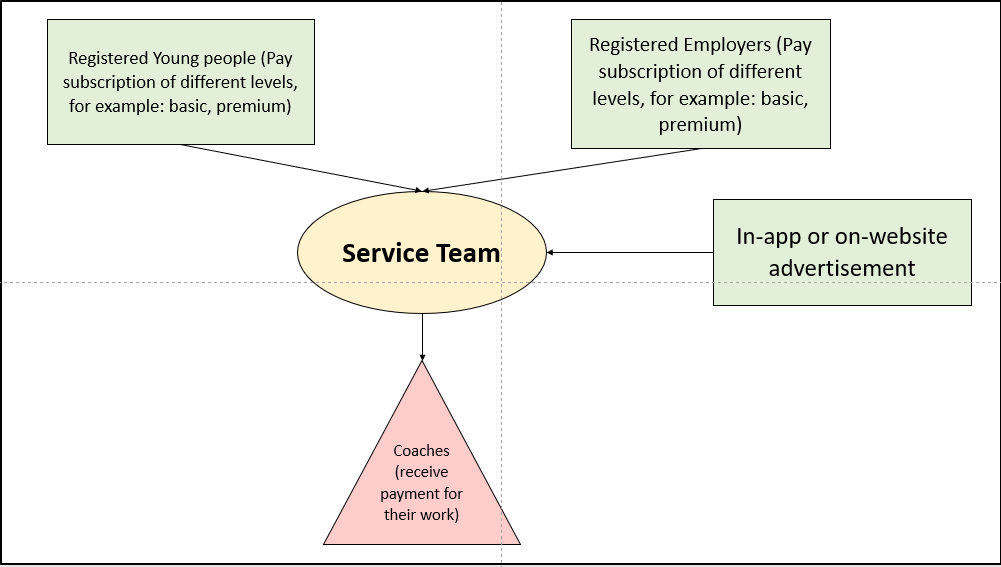Introduction
In recent years, the global market has changed due to the appearance of the COVID-19 pandemic. Therefore, developing a successful business has become a more significant challenge for many young entrepreneurs. In creating a venture, it is essential to understand the problem and what kind of opportunity this problem presents. Youth unemployment is the problem that gives opportunity to launch a venture.
Opportunity Recognition
The problem that I am going to address is unemployment among young people. This discovery arose due to a paper by Axelrad mentions International Labor Office’s (ILO) statistics, according to which youth have the most problems finding their first job (Axelrad et al., 2018, p. 8). According to Axelrad., statistics is a critical assumption that shows that the youth (15-24) unemployment rate is much higher in most countries than that of adults (24-50). Their research confirmed that unemployment among young workers “stems from the characteristics of the labor market” (Axelrad et al., 2018, p. 9). The issue with engaging youth is probably their lack of skills for the desired position. This problem creates an opportunity to create a solution for both young people seeking jobs and employers hunting for young talents.
Business Model
The solution that is suggested for the youth unemployment problem is an online coaching service that connects young people with coaches and employers and service team. The name of the service is to be determined later. The role of each registered party is described in figure 1.

The benefit of using this “Career Service” for all parties is equal. The companies optimize time and financial resources for finding matching candidates. The coaches get an economic benefit and a flexible work schedule by using the service as their employer.
The business model that the career service will employ is the subscription based model. Figure 2 shows the rough vision of the capital flow in the company.

Opportunity Evaluation
The opportunity of building a technology business based on the youth unemployment problem is potentially profitable and potentially challenging. To determine this problem’s strong and weak points, I will use a SWOT analysis (S – strengths, W – weaknesses, O – opportunities, T – threats).
Strengths
Providing a solution to the youth unemployment problem might serve as a part of solving UN’s SDG number one, “No Poverty.” According to the research conducted by Dahliah et al. (2021), if the community is employed and has income, and that income consequently meets the needs of the community, fewer people will be poor. Decreasing unemployment can help reduce poverty.
Weaknesses
According to Harvard Business Review, most start-ups fail because more than two third cannot deliver a return to the investors (Eisenmann, 2021). The problem is start-ups fail to meet real customer needs and make false starts. Career service also has a potential of not meeting customer needs (meaning three categories listed in figure 2).
Opportunities
As mentioned in Axelrad et al. research, this career service has the potential to become international because every country faces an unemployment issue. Therefore, the business has the opportunity of entering the global market.
Threats
The biggest threat to career service is competitors. Career service is a comparatively innovative product; however, it might have big companies like LinkedIn as its competitor during the MVP run due to similar functions.
Conclusion
To summarize, an opportunity to build a business based on the youth unemployment problem has both strengths and weaknesses, also opportunities for further development and threats in the face of competitors. Career service is a tech solution that unites young people seeking a job, employer companies, and professional coaches. The service team and coaches work collaboratively to match employers with young talents. Such an application might serve as part of the “No Poverty” SDG solution but also potentially fail as a start-up. I believe there is needed more research on this problem to identify whether this business solution will work or not.
References
Axelrad, H., Malul, M., & Luski, I. (2018). Unemployment among younger and older individuals: Does conventional data about unemployment tell us the whole story? Journal for labor market research, 52(1), 1-12,
Dahliah, D., & Nur, A. N. (2021). The influence of unemployment, human development index, and gross domestic product on the poverty level. Golden Ratio of Social Science and Education, 1(2), 95-108.
Eisenmann, T. (2021). Why start-ups fail. Harvard Business Review.